#family papilionidae
Text
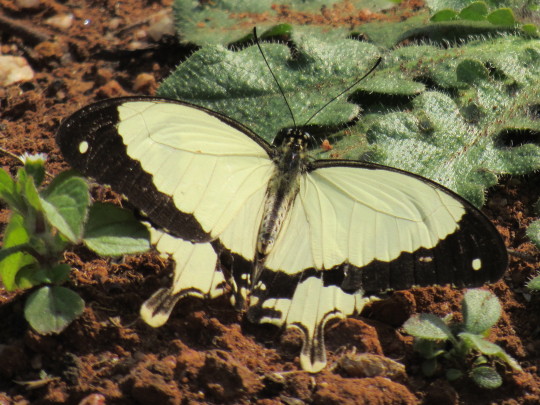
mocker swallowtail (papilio dardanus) in the vegetable patch at a family friend's house
#took f o r e v e r for him to settle down#fieldnotes#butterflies#butterfly#lepidoptera#order lepidoptera#papilionidae#family papilionidae#m
739 notes
·
View notes
Text
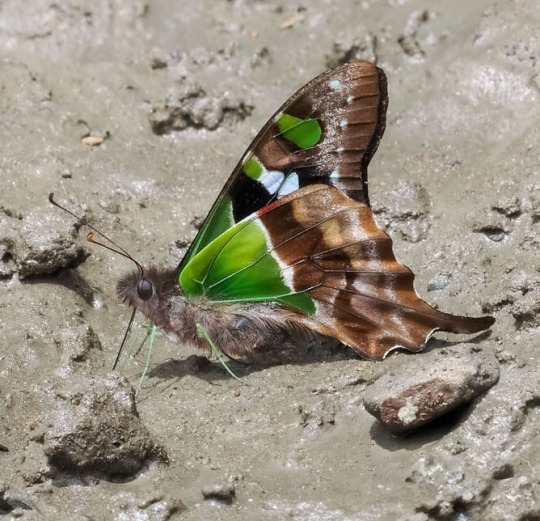

Purple-spotted Swallowtail (Graphium weiskei), family Papilionidae, Papua New Guinea
photograph by Gan CW
#swallowtail#graphium#papilionidae#lepidoptera#butterfly#entomology#insect#new guinea#animals#nature
5K notes
·
View notes
Text

Papilio bianor, also known as the common peacock, Chinese peacock black swallowtail emerald or Chinese peacock, is a species of butterfly in the family Papilionidae, the swallowtails. It is native to Continental Asia. It is the state butterfly of the Indian state of Uttarakhand. Wikipedia
218 notes
·
View notes
Text

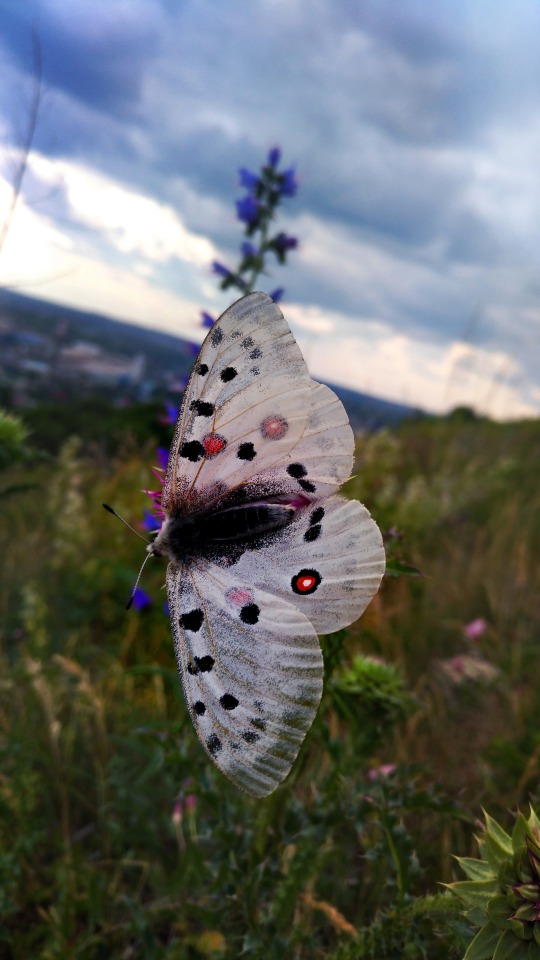
Аполлон обыкновенный (Parnassius apollo).
Аполлон – крупная бабочка из семейства парусников, названная в честь древнегреческого бога искусств Аполлона – один из наиболее редких видов насекомых в Европе. Во многих странах он полностью исчез, занесен не только в Красную книгу России, но и в Красную книгу международного союза охраны природы.
Apollo Butterfly.
Apollo - a large butterfly from the family Papilionidae, named after the ancient Greek god of the arts Apollo - one of the rarest insect species in Europe. In many countries, it has completely disappeared; it is listed not only in the Red Book of Russia, but also in the Red Book of the International Union for Conservation of Nature.
#русский tumblr#россия#июнь 2023#лето#природа#загородом#поход#бабочка#аполлон#лесные цветы#небо#макрофото#мои фото#russia#summer#june#outdoors#mountain hike#nature#nature photography#butterflies#apollo#wildflowers#sky#my photos#beauty of nature#original photography#photographers on tumblr#macrophotography
248 notes
·
View notes
Text
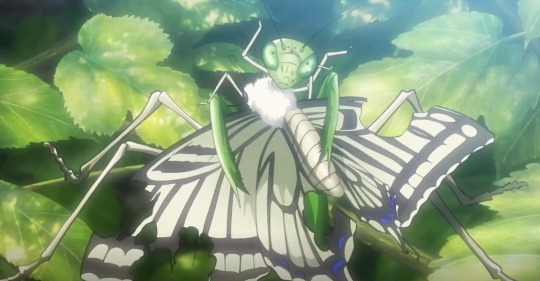
Today’s anime insects of the day are: this Mantis and unfortunate Butterfly prey from Attack on Titan
Order: Mantodea + Lepidoptera
Family: Mantidae + Papilionidae
#attack on titan#shingeki no kyojin#mantodea#lepidoptera#Mantidae#papilionidae#mantis#butterfly#insect
49 notes
·
View notes
Text
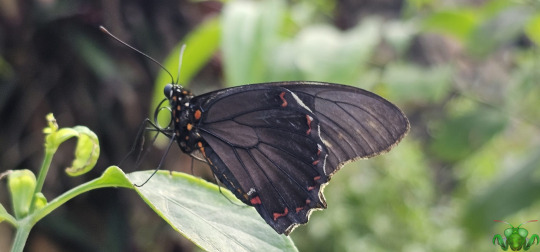
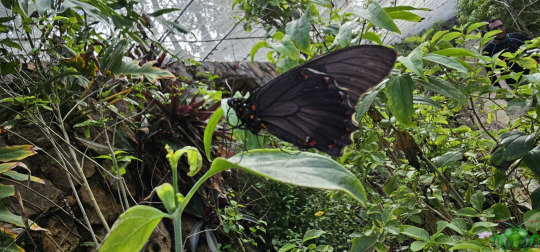

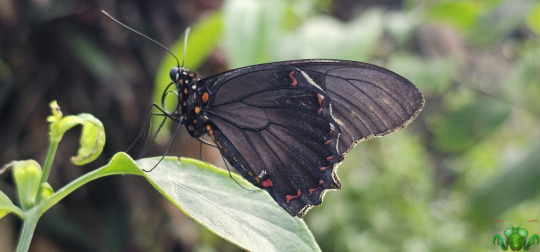
Polydamas Swallowtail Butterfly - Battus polydamas
Though lovely this dark-winged Butterfly is, I'd have loved to see the dorsal side of its wings. Nevertheless, I won't complain too much given these pictures come from a long way from home and from a dear friend who has given us a glimpse to some tropical insects. This dazzling specie features pronounced veins and prominent red markings along the edge of the underside of the hindwing. The forewing features a yellow band that rides along the wing (but not to the edge) both above and below. It's similar to the band of the male Eastern Black Swallowtail but positioned lower on the wing and less steep in shape. The band appears somewhat faded on the underwing, hence why I would have liked to see the dorsal side. The Butterfly's body itself can be easily recognized from the coat of orange-red dots it wears and a similarly colored stripe running along the abdomen (which is partially visible in Pictures 1 and 4). With all these observations in mind, similar to the aforementioned Eastern Black Swallowtail, this specie may be mistaken at a passing glance with the Pipevine Swallowtail (a close relative: Battus philenor). Red spots or white spots, only a landing will tell, as the Pipevine has a royal blue shroud atop its wing scales (if male). Based on location, this individual is likely of the western group (subspecie B. polydamas polydamas), but there are many subspecies in the Central America range so I can't be sure.
It truly is a beautiful insect, and it maintains those stunning colors all throughout its entire development from Caterpillar to Butterfly. From the images I've research Polydamas Caterpillars are plump and dark (dark brown to black range) with a coat of orange spikes along their body and two long protrusions near their head. Such an appearance not only looks fearsome, but can also lead them to be mistaken for B. philenor Caterpillars. From the images I've looked at for comparison, the Polydamas Caterpillars are far more elaborate in appearance. However, when metamorphosed into Butterfly, there is one thing that is sure not to be missed on this specie...or missed, actually as the case may be. Contrary to some of its more popular relatives, this insect is also known as the Tailless Swallowtail! Unlike the handful of Swallowtails* that have graced this blog, there is a complete absence of hindwing tail, and appears to be the only specie in North America to feature tail absence. While these tails are beautiful to observe, it was enlightening to learn just how large the Papilionidae family was and how many Swallowtails actually lack tails. For example, the Palawan Birdwing (Trogonoptera trojana) is a Swallowtail (Birdwing), and though magnificent in size and iridescence, it too lacks tails. That's just the way the wings form within some branches of Lepidoptera.
*Note: As a Swallowtail, you can actually see all 6 legs active and strong, compared to the 4 active legs of the previous two tropical Brush-Footed Butterflies.
Pictures were taken on February 11, 2024 in Mexico with a Samsung Galaxy S23 Ultra.
#jonny’s insect catalogue#butterfly#polydamas swallowtail#tailless swallowtail#swallowtail butterfly#lepidoptera#insect#mexico#february2024#2024#nature#entomology#invertebrates
13 notes
·
View notes
Text
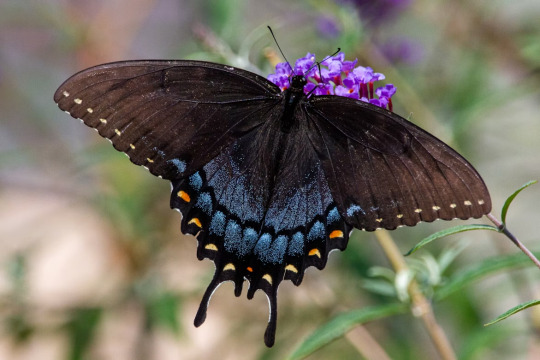
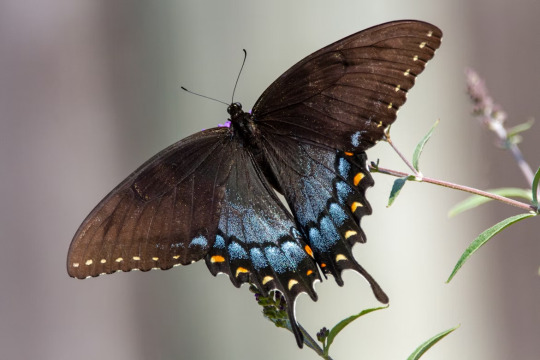
Eastern Tiger Swallowtail - Backyard, Cordova, Tennessee, USA
Joshua J. Cotten
Scientific name: Papilio glaucus
Family: Papilionidae
Class: Insecta
Order: Lepidoptera
Average size: 3.12 to 5.5 inches ufl.edu
Domain: Eukaryota
Genus: Papilio
Papilio glaucus, the eastern tiger swallowtail, is a species of butterfly native to eastern North America. It is one of the most familiar butterflies in the eastern United States, ranging north to southern Ontario, Canada, and is common in many different habitats.
#Backyard#Cordova#Tennessee#USA#US#Wildlife#TNWildlife#United States#United States of America#North America#Butterfly#Butterflies#Papilio glaucus#Papilionidae#Insecta#Lepidoptera#Eukaryota#Papilio
5 notes
·
View notes
Note
For bug tax I have one tiny spider (the thing its on is hand sized)...

...a live butterfly...

...and a dead one

If you know what species any of these are I'd love to know!
OH BOY BUG TAX
I’m in undergrad still so take everything I say with a grain of salt
1. Definitely a jumping spider so it’s in the family Salticidae
2. Family Nymphalidae (feels like the most common butterfly family), but cross referencing BugGuide.net and the iNaturalist app could place it into the Junonia genus aka “buckeyes” butterflies from their false eyes pattern. The suggested species is Junonia grisea but I cannot 100% tell you for sure.
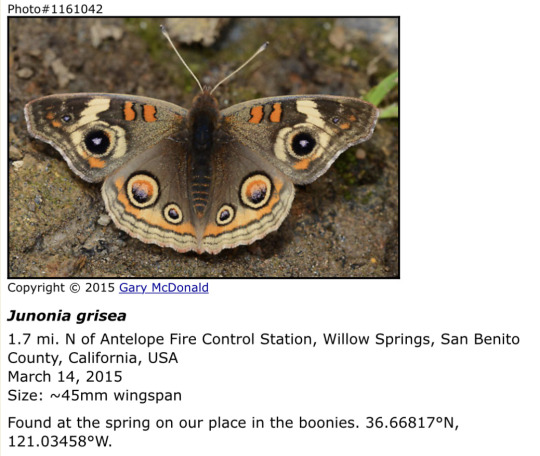
^example photo I’ve cross referenced
3. That is a very dead swallowtail butterfly (family Papilionidae)! Trying to ID them any lower is a tough time for me due to their similarities.
#I’m taking an Arachnid biology class rn so hit me up for arachnid photos it’ll help me study#BUG TAX#doctor direst
10 notes
·
View notes
Text

Papilio palinurus
Papilio palinurus, the emerald swallowtail, emerald peacock, or green-banded peacock, is a butterfly of the genus Papilio of the family Papilionidae. It is native to Southeast Asia, but is regularly kept in butterfly houses around the world.
By Jennifer on Flickr
#Papilio palinurus#butterfly#emerald swallowtail#flower#colours#Southeast Asia#Papilionidae#nature#green#spring
12 notes
·
View notes
Note
Top five butterflies?
Blue Morpho
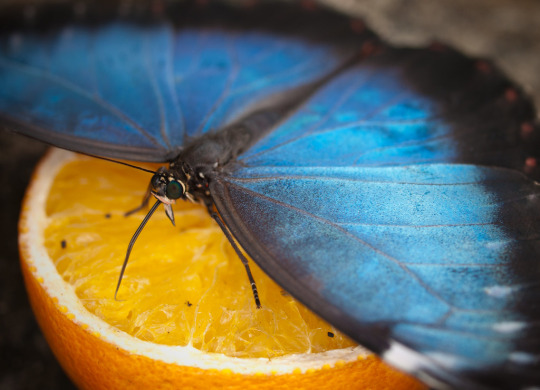
{via William Warby, flickr}
Native to the tropical forests of Latin America from Mexico to Colombia. Adults spend most of their time on the forest floor and in the lower shrubs and trees of the understory with their wings folded. However, when looking for mates, the blue morpho will fly through all layers of the forest. {via Rainforest Alliance}
2. Painted Lady

{via Huffington Post}
The most widespread butterfly species found on the planet, occupying all continents except Antarctica and Australia! {via University of Colorado, Museum of Natural History}
My mom and I raised these for a science project when I was in elementary school, and they've held a special place in my heart since.
3. Eastern Tiger Swallowtail

{via Fine Art America}
Male Eastern Tiger Swallowtails are always yellow, while females may be yellow or black. Females have a splash of iridescent blue wash on their tales, while males do not. {via Butterflies at Home}
We see these fellas a lot near us.
4. Black Swallowtail

{via All of Nature}
A common butterfly found throughout much of North America. Papilio polyxenes is one of many species in the largest genus in the butterfly family Papilionidae (swallowtails). It ranges from southern Canada to northern South America, but is most common east of the Rocky Mountains. There are several subspecies that occur in Mexico, Central America and South America. It has been designated as the state butterfly of Oklahoma. Adult black swallowtails are usually found in open areas, such as fields, meadows, parks, wetlands, prairies and sunny backyards. {via Wisconsin Horticulture}
5. Monarch

{via Wikipedia}
The eastern North American monarch population is notable for its annual southward late-summer/autumn instinctive migration from the northern and central United States and southern Canada to Florida and Mexico. During the fall migration, monarchs cover thousands of miles, with a corresponding multigenerational return north in spring. The western North American population of monarchs west of the Rocky Mountains often migrates to sites in southern California, but individuals have been found in overwintering Mexican sites, as well. In 2009, monarchs were reared on the International Space Station, successfully emerging from pupae located in the station's Commercial Generic Bioprocessing Apparatus. {via Wikipedia}
4 notes
·
View notes
Text
BUTTERFREE

Butterfree is a Bug- and Flying- type butterfly Pokémon native to the Kanto-Johto area. Butterfree are known to release poison dust and can be very dangerous if frightened.
TAXONOMY
Butterfree are Swallowtail Butterflies in the family Papilionidae. The Kantonian name batafurī comes from a localization of the word Butterfly and the larval name kyatapī similarly comes from the word Caterpillar. The Galarian names Butterfree and Caterpie are combinations of the original words and the Kantonian names.
Butterfree’s chrysalis stage is called Metapod, from the words Meta, meaning both “change” and “between,” and Pod, meaning a long seed, as the Metapod resembles a long seed in which Caterpie changes into Butterfree.
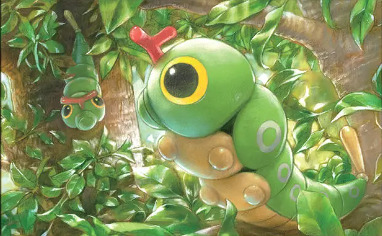
Butterfree caterpillars in Viridian Forest, Kanto
DESCRIPTION
Caterpie are green and yellow, reaching a length of 30 cm. Unlike most Papilonidae caterpillars, Caterpie has no eyespots, instead having two proportionately large compound eyes up to 3 cm in diameter. These eyes serve the same function as eyespots while also giving the Caterpie much better vision than other caterpillars. Colored rings around these eyes further cause them to appear larger. Caterpie’s osmeterium, often mistakenly called antennae, does not retract, instead producing its repellent odor only when threatened.
Caterpie normally move at 0.1 km/hr, but when threatened can move as fast as 8 km/hr for bursts of a few seconds.
Caterpie pupate into Metapod within sixty days of hatching. Metapod are fully green and are usually hidden among leaves. Metapod are approximately twice as long as the initial Caterpie. Metapod are not fully immobile and may hop, but this is an ineffective method of locomotion and is only used to move into hiding.
Metapod emerge into Butterfree after a week to ten days. Butterfree wings are white with black veins and have a wingspan of 1.1 m. Female Butterfree have large black spots on their back winds. A Butterfree’s body is usually purple and blue, though it may be shades of pink. Unlike other butterflies, Butterfree are four-footed, with two large back feet and two small forelegs. These feet are rarely used for standing; the Butterfree grips branches between them and holds tight while resting.
The scales of Butterfree’s wings are water-repellant, enabling Butterfree to fly even when wet. As these scales age, they deteriorate into a toxic powder. This powder deters predators and can be intentionally spread by the Butterfree.
Butterfree have Flying-type elemental affinity and have use their wings to create and control winds. It uses this control in combination with its water-repellant scales to fly during rainstorms. Butterfree can create small bursts of wind to inhibit aerial predators and enable escapes.
Though not Psychic-type Pokémon and not otherwise showing signs of higher intelligence, Butterfree can produce psionic blasts. These blasts are usually more disorienting than harmful, but they can cause unconsciousness.
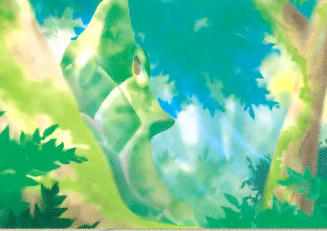
Metapod are well camouflaged in forest environments
HABITAT
Lone Butterfree may be found nearly anywhere in temperate and tropical climates, but thriving populations are primarily limited to the Kanto-Johto region, centered in the Viridian Forest, and the Alola region, centered in the Akala Jungle. Wild caterpie rarely survive long enough to mature outside of these dense, wooded areas along the Pacific coast.
BEHAVIOR
Caterpie eat leaves and do little else unless disturbed. Caterpie primarily rely on mimicry to disguise themselves as snakes, but if threatened will release a foul odor. This odor repels Spinarak but is less successful against birds such as Pidgey, Spearow, and Pikipek. If pursued, the Caterpie may expel silk at its attacker to slow it before fleeing. When the Caterpie is ready to pupate, it will find a spot where it can hide in foliage.
Metapod do not eat and do not move unless their hiding spot becomes unsustainable. If this happens, the Metapod will seek out a new location by hopping along the ground.
Once emerged, a Butterfree builds a small nest, often in the same spot. It then begins searching for nectar and honey, going up to ten kilometers from its nest each day. In addition to eating its fill, the Butterfree will coat its hind legs in food to bring back to its nest.
Butterfree frequently compete for food with other Bug-types in an area. In Kanto and Johto, Butterfree battle with Beedrill both over nectar and over the Beedrill’s honey. In Alola, Butterfree have territorial disputes with Ribombee. These battles are larger threats to Butterfee than any natural predators.

Butterfree collecting nectar
REPRODUCTION
During early summer, Butterfree leave their nests to seek out mates. Males perform elaborate aerial courtship dances and may battle other nearby males. Once the female chooses the male, they remain mates for the duration of their lives. The female may lay her eggs in either Butterfree’s nest, or they may seek out a new nest together. These eggs hatch after approximately four weeks.
After mating, Butterfree do not distinguish between their own young and other Caterpie. If any Butterfree sees any Caterpie in danger, it will assist, even if this means directly attacking predators.

Butterfree may congregate in large groups during mating season
CATERPIE FARMING
Harmless and with rapid growth, Caterpie are farmed for a number of common uses. Caterpie silk production is higher than that of any non-Pokémon animal, and Caterpie silk farms are an important industry in Kanto and the surrounding regions. Caterpie’s osmeterial secretions, the source of its foul odor, are harvested as a component in Repels. When these Caterpie are ready to pupate, they may be used as animal feed.
MUTATIONS
When using the power of a Dynamax Power Spot, Butterfree may show a Gigantamax transformation. This minor transformation lengthens their wings and tints them green. Gigantamax Butterfree’s toxins become far more potent and are a significant hazard to humans.
12 notes
·
View notes
Note
I heard you were talking about foxes! I love foxes! But you know what I love more?
Moths and Butterflies!!
Here are some cool moths and butterflies to look up and look at.
(All of the info is from wikipedia)
MOTHS
The luna moth - The luna moth, also called the American moon moth, is a Nearctic moth in the family Saturniidae, subfamily Saturniinae, a group commonly named the giant silk moths. The moth has lime-green wings and a white body. Its caterpillars are also green
The diva moth- the Diva Hemerophila moth, is a moth in the family Choreutidae. It was described by Riley in 1889. It is found in Florida and Cuba. With brightly colored wings, clubbed antennae, and a day flying disposition, Diva Moths are often mistaken for butterflies.
The Hummingbird Hawk Moth- The hummingbird hawk-moth is a species of hawk moth found across temperate regions of Eurasia. The species is named for its similarity to hummingbirds, as they feed on the nectar of tube-shaped flowers using their long proboscis while hovering in the air; this resemblance is an example of convergent evolution.
BUTTERFLIES
The Peacock Pansy- Junonia almana, the peacock pansy, is a species of nymphalid butterfly found in Cambodia and South Asia. It exists in two distinct adult forms, which differ chiefly in the patterns on the underside of the wings; the dry-season form has few markings, while the wet-season form has additional eyespots and lines.
The Emerald Swallowtail.- Papilio palinurus, the emerald swallowtail, emerald peacock, or green-banded peacock, is a butterfly of the genus Papilio of the family Papilionidae. It is native to Southeast Asia, but is regularly kept in butterfly houses around the world
Thats all I’m going to give you for now but if you’d like more please let me know!
-Misty Anon
I enjoyed your input ! 🦋
From reading, I would say the lunar moth & the emerald swallowtail are my favourites!
Hit me up with such facts anytime you feel like it!
I may not be a fan of insects, but I like observing them. Something about the humming of bees & the elegant flying of butterflies intrigues me...
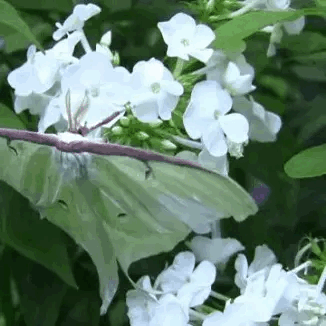

I apologize for not replying sooner, I was... not available.
#donnie speaks#donnie answers#donnies exceptional mind#mikeys world of feelings#raph a roni blog#neon leons messy mind palace#turtle net#butterflies#moths#rise of the teenage mutant ninja turtles#rottmnt#rottmnt donnie#rottmnt donatello#teenage muntant ninja turtles#donatello tmnt#tmnt donatello#rise of the tmnt#autistic donatello#rise autistic donnie#rottmnt autistic donnie#rottmnt rp#rottmnt donatello roleplay
4 notes
·
View notes
Text


Kaisar-I-Hind Swallowtail (Teinopalpus imperialis), family Papilionidae, Chiang Mai, Thailand
photographs by Antonio Giudici
1K notes
·
View notes
Text

Zerynthia polyxena, a butterfly belonging to the Papilionidae family
5 notes
·
View notes
Text
Swallowtail Butterflies

Swallowtail Butterflies comes from the family of Papilionidae. They have a diverse group of species known for their elegant wings and graceful flight. They have a very distinct wing shape, with elongated hindwings that often resembles the tails of swallows, like their name.
Swallowtail undergo complete metamorphosis, like all butterflies. To learn more about the different stages of butterfly's metamorphosis, visit our page for an in-depth overview.
They are native to the tropics, particularly in Southeast Asia and East Asia.
Swallowtail butterflies exhibits fascinating behaviors such as courtship displays, defense and migration. Males engage in elaborate dances to attract females. They do migrate in order to find areas seasonal movements suitable for breeding and overwintering sites.
They play an important role as pollinators, as they are feeding on necar it facilitates the reproduction of flowering plants, while their presence or absence can signal changes in habitat quality and diversity.
Today, Swallowtail Butterflies face threats to their numbers such as climate change, pesticide use, etc.
0 notes
Link
Butterflies and moths belong to the insect Order Lepidoptera, which is a word that comes from the Greek words for “scale” and “wing.” While most of the 150,000 species in this order are moths, there are an estimated 18,000 butterfly species found globally. The earliest known butterfly fossils date to the mid Eocene epoch, between 40–50 million years ago. Nature’s Wonders Butterflies of the World Volume 2 add-on set expands the 3D butterfly world with 8 species of Swallowtail found through the globe. They are large, colorful butterflies in the family Papilionidae, and include over 550 species. Though the majority are tropical, members of the family inhabit every continent except Antarctica and include the largest butterflies in the world, the birdwing butterflies. The forked appearance in some of the swallowtails' hindwings, which can be seen when the butterfly is resting with its wings spread, gave rise to the common name swallowtail. This set supports Poser’s Firefly and Superfly and DAZ Studio 3Delight and Iray render engines. Required Products: Nature's Wonders Butterflies Software: Poser 10 / Poser Pro 2014 +, Daz Studio 4, Poser Pro 11, DAZ Studio 4 With IRAY, Poser 12, Poser 13 Coming soon: https://3d-stuff.net/ #daz3d #dazstudio #3drender #3dart #daz3dstudio #irayrender #3dartwork #blender #blenderrender #blenderart #noaiart #noaiwriting #noai https://3d-stuff.net/
0 notes